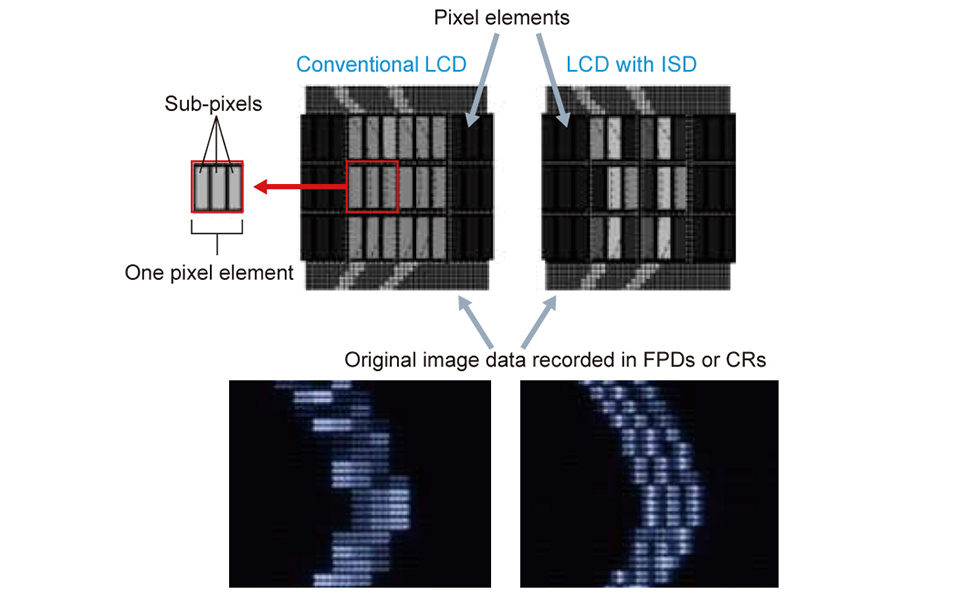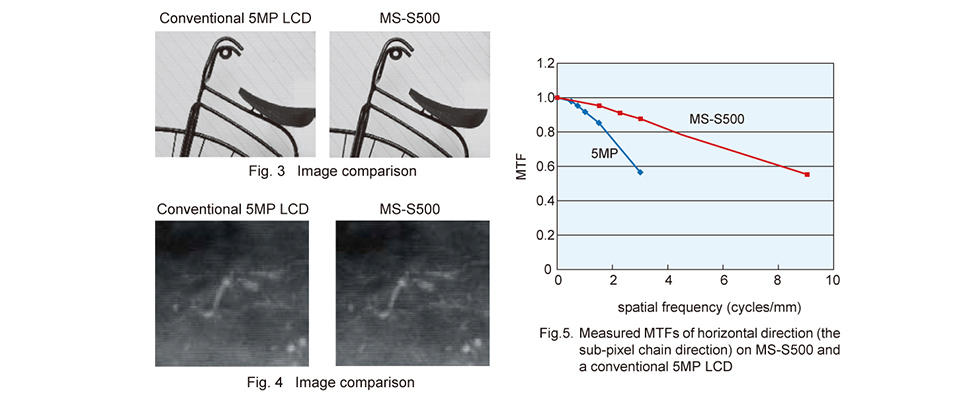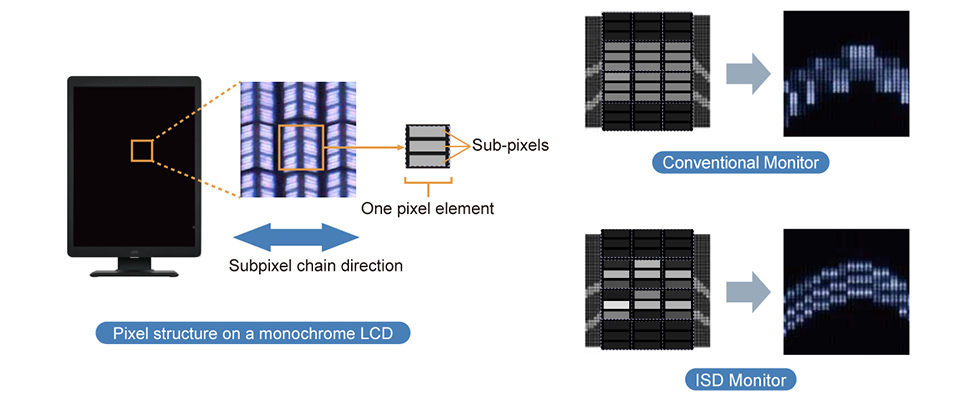Fig. 3 and 4 show captured images on a conventional 5MP LCD and MS-S500 that was developed out of a conventional 5MP LCD with Independent Sub pixel Drive technology. The depiction detail was greatly improved on MS-S500 and Fig. 4 shows its excellent depiction ability of the micro calcifications, especially the edges.
Fig. 5 shows the comparison of measured MTFs of the conventional 5MP LCD and MS-S500 that employ the same LCD panels of 5MP. As shown in the graph, the MTF of MS-S500 was improved obviously by the Independent Sub pixel Drive function.
Furthermore, comparative evaluations performed by radiologists substantiated the clinical benefits of MS-S500 over the conventional 5MP LCD.
While image quality of the medical monitors such as luminance, contrast, viewing angle, and grayscale features has been improved, resolution enhancement was not actualized because of its cost.
From the physical measurements and perceptual comparisons, this new resolution enhancement technology by the Independent Sub pixel Drive, which actualizes excellent depiction ability inexpensively, would be very important in softcopy diagnostic environment.




